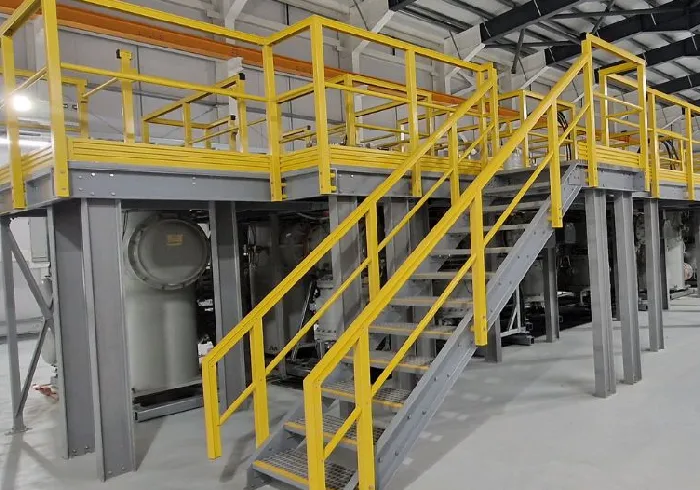loading...
- No. 9, Xingyuan South Street, Dongwaihuan Road, Zaoqiang County, Hengshui, Hebei, China
- admin@zjcomposites.com
- +86 15097380338
- Welcome to visit our website!
Effective Slip Resistant Grating Solutions for Enhanced Safety in Industrial and Commercial Environments
The Importance of Slip-Resistant Grating in Safety and Design
In various industrial and commercial environments, ensuring safety is paramount. One effective solution that has gained significant attention is slip-resistant grating. This type of grating is specially designed to minimize the risk of slips and falls, making it a vital component in settings where wet, oily, or otherwise hazardous conditions are prevalent. This article explores the benefits, applications, and design features of slip-resistant grating.
Understanding Slip-Resistant Grating
Slip-resistant grating refers to flooring systems, often made from materials like fiberglass, steel, or aluminum, that incorporate unique surface textures or coatings designed to provide enhanced grip. This type of grating is critical in environments such as factories, processing plants, walkways, and even outdoor spaces. The design aims to offer superior traction underfoot, preventing accidents caused by slipping, especially in areas exposed to water, oil, chemicals, or other slippery substances.
Benefits of Slip-Resistant Grating
1. Enhanced Safety The primary advantage of using slip-resistant grating is the enhanced safety it provides. By reducing the likelihood of slips and falls, it helps to protect employees and visitors from injuries, thereby lowering the risk of work-related accidents and associated liabilities.
2. Compliance with Regulations Many industries are governed by strict safety regulations. Slip-resistant grating can help organizations comply with these standards, reducing the risk of fines and ensuring a safer working environment.
3. Durability and Low Maintenance Typically made from robust materials, slip-resistant grating is designed to withstand harsh environments. This durability translates to lower maintenance requirements and longer lifespan, offering long-term cost efficiency.
4. Versatility Slip-resistant grating is available in various materials and designs, making it suitable for numerous applications. Whether in industrial settings, public buildings, or transport hubs, slip-resistant grating can be tailored to meet specific needs, from load-bearing capacity to aesthetic considerations.
Applications of Slip-Resistant Grating
Slip-resistant grating finds application in multiple sectors, including
slip resistant grating

- Industrial Facilities Factories, warehouses, and chemical processing plants often have wet or contaminated floors. Slip-resistant grating ensures that workers can move safely through these spaces, reducing the risk of accidents.
- Commercial Spaces In retail environments and public buildings, maintaining customer safety is crucial
. Slip-resistant grating in entryways, restrooms, and food service areas enhances pedestrian safety.- Outdoor Areas Walkways, docks, and ramps benefit from slip-resistant grating, providing safe passage in varying weather conditions. This is particularly important in regions prone to rain or ice.
Design Features
The design of slip-resistant grating often includes specific features that enhance traction. Common elements include
- Surface Textures Many slip-resistant gratings have textured surfaces that increase friction. Patterns like raised dots, grooves, or serrations are effective in providing grip.
- Coatings Some gratings are coated with anti-slip materials, which can further augment their slip resistance. These coatings can also protect against chemicals and environmental wear, extending the grating's lifespan.
- Customizable Options Slip-resistant gratings can be manufactured to specific sizes, colors, and patterns, allowing for personalization that caters to aesthetic preferences while prioritizing safety.
Conclusion
Slip-resistant grating is an essential component in enhancing safety across various industries and environments. By embracing the benefits of these specialized flooring solutions, organizations can significantly reduce the risk of slips and falls, comply with safety regulations, and promote a culture of safety. With diverse applications and customizable features, slip-resistant grating is not just a protective measure but also a smart, long-term investment for any safety-conscious establishment.
-
Premium FRP Handrail for All ApplicationsNewsAug.29,2025
-
Low Maintenance FRP Mini Mesh Grating ProductsNewsAug.29,2025
-
Innovative FRP Square Tubes for Modern Industrial SolutionsNewsAug.29,2025
-
FRP Water Storage Tanks Wholesale Solutions for Bulk BuyersNewsAug.29,2025
-
FRP Molded Grating Solutions for Diverse Industrial ApplicationsNewsAug.29,2025
-
Construction Advancements Through FRP Pultruded ProfilesNewsAug.29,2025
-
Why Choose FRP Railings, Guardrails, and Handrail Systems?NewsAug.29,2025
